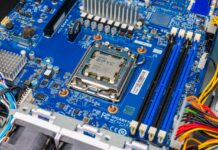5th Gen Intel Xeon Emerald Rapids Performance
Taking a look at Intel’s gen/ gen performance gains, Intel is using a number of different SKUs. For Web, Data Services, and AI it is using the Platinum 8480+ as a comparison point, a 56-core part. For HPC it is using the Intel Xeon Platinum 8490H, a 60-core part primarily destined for 4-socket and 8-socket servers. For Network it is using the Platinum 8470N 52 core part. All of these, however, are being compared to the Intel Xeon Platinum 8592+.
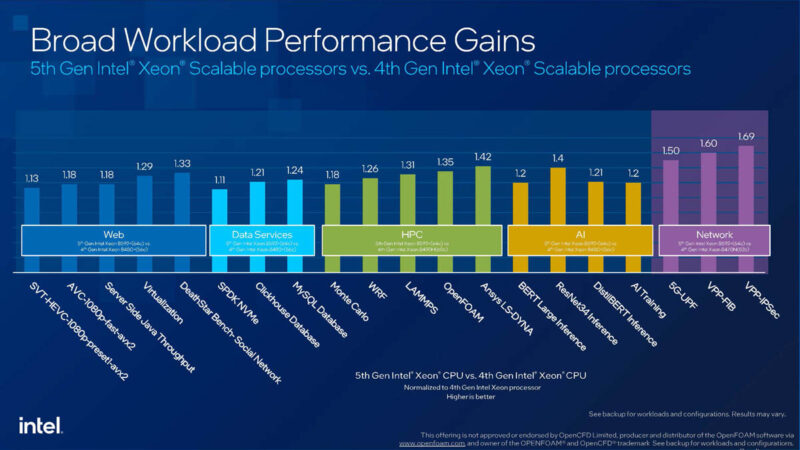
The Platinum 8592+ has more cache and cores, so that is generating a lot of this uplift. Also, and importantly here, Intel is not comparing the HPC performance to its Xeon MAX CPUs designed for HPC. Many of those workloads will be better off with Xeon Max.
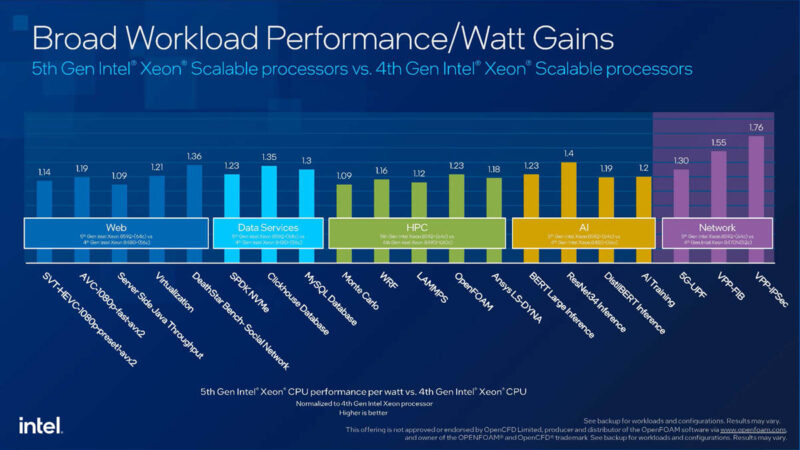
One of the big changes in this generation is the lower latency fabric with two dies instead of four.
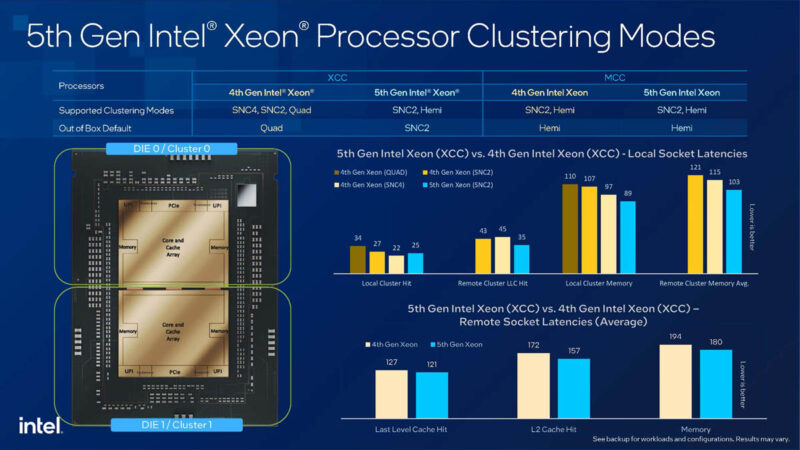
Here is Intel’s slide on TDX performance for confidential computing. As a fun note, Intel’s presentation we are pulling these was more than 60% disclosure slides.
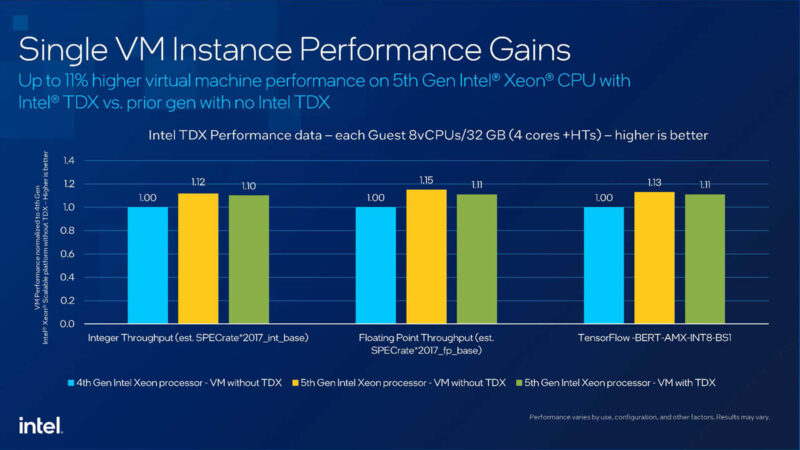
As one would expect, using IAA, DLB, DSA, QuickAssist, and AMX greatly improves the performance per watt of the new parts. AMX is on every part, but the availability and number of accelerators vary widely with each SKU used.
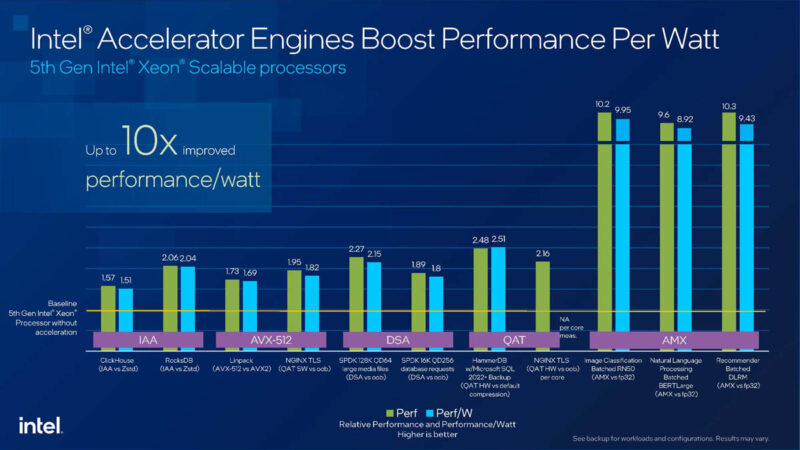
Again, here is the 56-core Intel Xeon Platinum 8480+ versus the 64-core 8592+ which is a 14.3% core count increase. Intel is getting a 10-44% improvement with that 14% core count increase, more than tripling the L3 cache size, and adjusting Turbo frequencies.
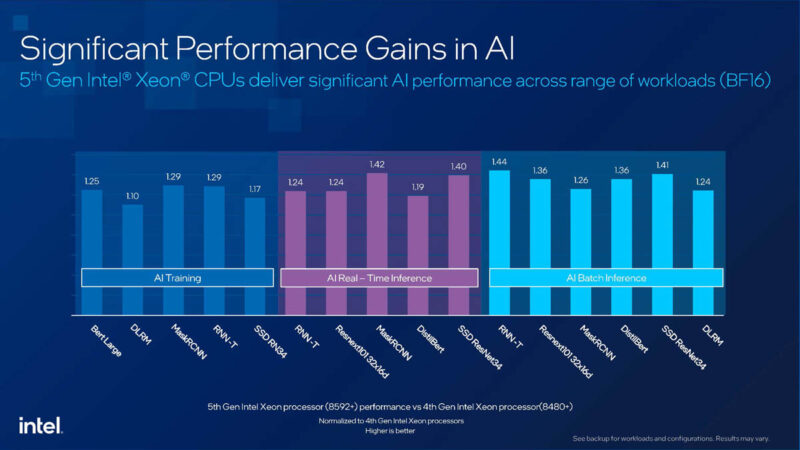
Next, let us get to our performance numbers.

